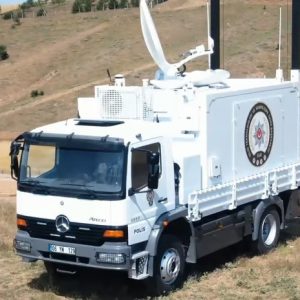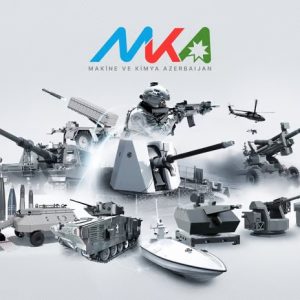In today’s rapidly evolving global landscape, America’s Commitment to Maintaining Aerospace Dominance isn’t just a matter of pride for the country; it’s a strategic imperative. As the world witnesses unprecedented advancements in technology and the emergence of new geopolitical challenges, the aerospace sector stands at the forefront of innovation and security. However, amidst the clouds of progress, there lies a looming concern – the risk of losing America’s hard-earned leadership in aerospace.
The Essence of Aerospace Dominance
Aerospace dominance isn’t merely about boasting the largest fleet of aircraft or the most advanced space exploration capabilities. It encompasses a multifaceted approach that intertwines military prowess, technological superiority, economic strength, and strategic alliances. At its core, aerospace dominance signifies the ability to exert influence, project power, and safeguard national interests across the skies and beyond.
Military Supremacy: Beyond Borders and Boundaries
The United States’ military prowess in the aerospace domain is unparalleled, with cutting-edge aircraft, missile defense systems, and space-based assets forming the backbone of its defense strategy. From stealth bombers to state-of-the-art fighter jets, the nation’s military arsenal showcases a commitment to innovation and readiness, ensuring deterrence and swift response capabilities in an ever-changing security landscape.
Technological Innovation: Fueling Progress and Prosperity
Innovation has always been the cornerstone of America’s aerospace industry. From the Wright brothers’ pioneering flight to the exploration of Mars, the nation’s relentless pursuit of technological advancement has pushed the boundaries of what’s possible. Investments in research and development, coupled with collaboration between government agencies, private corporations, and academic institutions, continue to drive breakthroughs in aviation, space exploration, satellite technology, and beyond.
Economic Resilience: Navigating Turbulence and Challenges
The aerospace sector isn’t just a critical component of national security; it’s also a significant contributor to the nation’s economic prosperity. With a vast network of manufacturers, suppliers, and service providers spanning across every state, the industry generates millions of jobs and fuels economic growth. Moreover, exports of aerospace products and services bolster the country’s trade balance, reinforcing its global competitiveness.
Challenges on the Horizon
Despite America’s historical dominance in aerospace, the road ahead is fraught with challenges that threaten to undermine its position on the world stage. From emerging technological rivals to shifting geopolitical dynamics, several factors demand strategic foresight and proactive measures to safeguard the nation’s aerospace interests.
Rising Technological Competitors: Navigating the New Space Race
The dawn of the 21st century has witnessed the rise of new players in the aerospace arena, with countries like China, Russia, and India investing heavily in space exploration, satellite technology, and hypersonic weapons. Their rapid advancements pose both opportunities for collaboration and challenges to America’s longstanding supremacy. As these nations strive to establish their presence in space and bolster their military capabilities, the United States must remain vigilant and innovative to stay ahead of the curve.
Budgetary Constraints: Balancing Priorities in an Era of Fiscal Restraint
In an era of fiscal restraint and competing budgetary priorities, the aerospace sector faces the challenge of securing adequate funding for research, development, and modernization efforts. Sequestration, budget cuts, and political gridlock have hindered long-term planning and investment, jeopardizing the nation’s ability to maintain its technological edge and readiness posture. Addressing these budgetary constraints requires bipartisan cooperation, strategic allocation of resources, and a commitment to prioritizing national security imperatives.
Talent Pipeline: Nurturing the Next Generation of Aerospace Leaders
As the aerospace industry evolves, so too must the workforce that drives its progress. However, the shortage of skilled workers, coupled with an aging workforce and competition from other sectors, poses a significant challenge to sustaining America’s aerospace leadership. Investing in STEM education, workforce development programs, and initiatives to attract diverse talent is crucial to cultivating the next generation of engineers, scientists, and innovators who will propel the industry forward.
A Call to Action: Preserving America’s Aerospace Advantage
In the face of these challenges, the United States must adopt a proactive and comprehensive approach to preserve its aerospace advantage and secure its future leadership in the skies and beyond. This necessitates strategic investments, collaboration across sectors, and forward-thinking policies that prioritize innovation, competitiveness, and national security.
Strengthening Partnerships: Forging Alliances in a Multipolar World
In an increasingly interconnected and multipolar world, the United States cannot afford to go it alone in safeguarding its aerospace interests. Strengthening partnerships with allies and like-minded nations is essential to collective defense, intelligence sharing, and technological cooperation. By fostering alliances and coalitions, the nation can leverage shared resources, expertise, and capabilities to confront common challenges and uphold international norms in the aerospace domain.
Investing in Innovation: Fueling the Engines of Progress
Innovation lies at the heart of America’s aerospace prowess. To maintain its technological edge, the nation must commit to sustained investments in research, development, and commercialization of cutting-edge technologies. This entails fostering a conducive environment for private-sector innovation, incentivizing entrepreneurship, and streamlining regulatory processes to accelerate the pace of innovation from lab to market.
Empowering the Workforce: Cultivating Talent for Tomorrow
Attracting, retaining, and developing a skilled workforce is paramount to sustaining America’s aerospace leadership. This requires investment in education and training programs that equip individuals with the technical skills, critical thinking abilities, and adaptability needed to thrive in the aerospace industry. Moreover, promoting diversity and inclusion within the workforce fosters creativity, resilience, and innovation – essential qualities for addressing complex challenges and driving progress.
Conclusion
As America charts its course in the 21st century, the preservation of aerospace dominance isn’t just a strategic imperative – it’s a testament to the nation’s commitment to advancing science, safeguarding security, and shaping the future of humanity. By embracing innovation, fostering partnerships, and empowering its workforce, the United States can overcome the challenges ahead and continue to soar to new heights in the pursuit of aerospace excellence.











